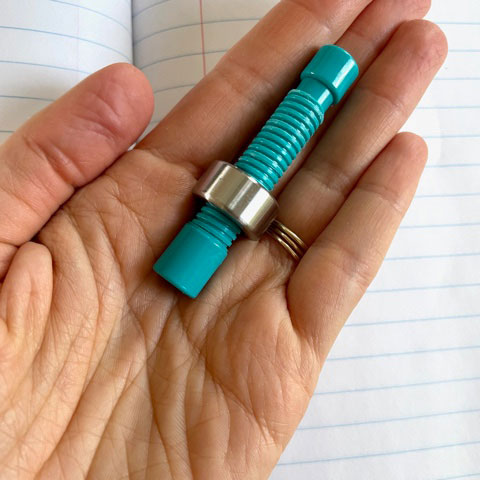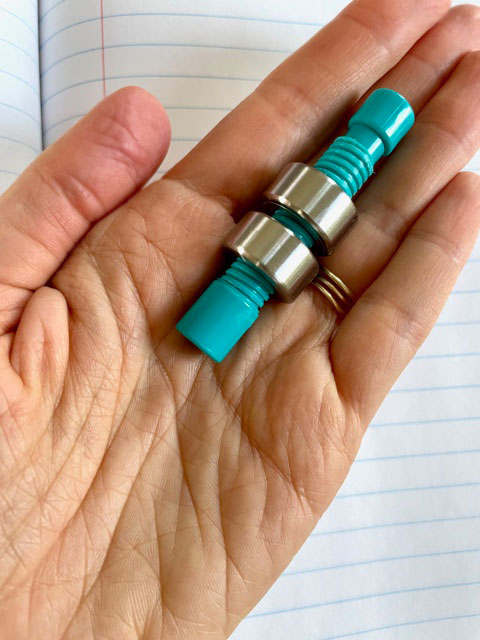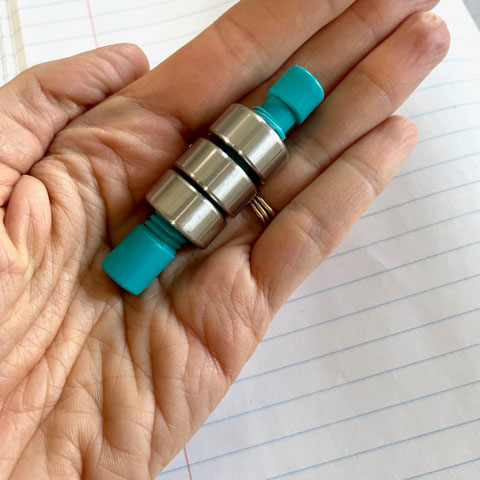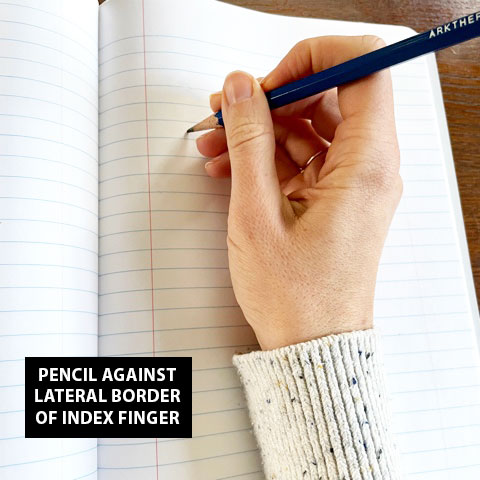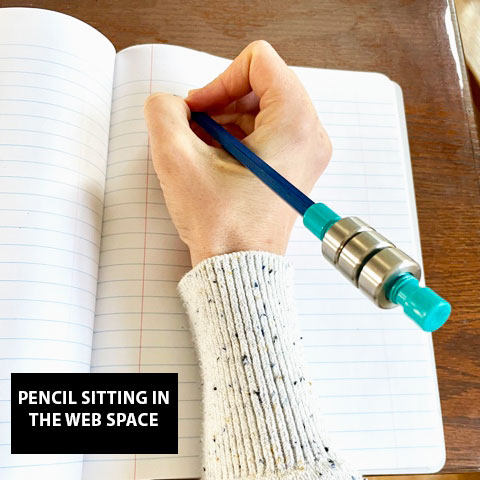How a Weighted Pencil Improves Handwriting
Posted by Guest Blogger Katie Zelinski, The Well Balanced OT on 7th Mar 2022
If you walk into any Kindergarten classroom, you’ll likely find students learning how to write their letters. In pre-school years, children may have started practicing drawing shapes and how to write their name, but this is THE YEAR. The year that they learn how to write upper- and lower-case letters. It sounds simple, right? Pick a pencil and draw some lines.
For some kids, it is that easy. That’s because their bodies and brains are openly communicating, which has led to the development of bilateral coordination, visual-motor integration, sensory processing, ocular motor skills, postural stability, and fine motor control.
For other students, when there is a hiccup in this communication, they may need more support. Today, we’ll be reviewing one support, ARK’s newest Weighted Pencil. Before we jump into that, let’s look at how all these systems work together to enable us to write:
- Bilateral coordination is the ability to use both sides of the body in a skilled way, working together or assisting the other in a task. For example, stabilizing the paper with your helper hand and using your dominant hand to write. For some kids, bilateral challenges can even impact their success with hand dominance.
- Visual-motor coordination is the ability to use the hands and eyes together in a skilled way. When it comes to letter production, the eyes are watching what the hand is doing and making sure the marks stay on the line and produce the intended letter. Try closing your eyes next time you have to write a sentence. It’s a fun game that helps you understand why visual motor-skills are so important.
- Sensory processing is a big one. The vestibular system allows us to sit upright without falling out of our chair or fidgeting at our seat. The proprioceptive system helps us know where our body is in space and exactly how much force to use when grasping that pencil and pushing into the paper. The visual system allows us to make sense of what we see. The tactile system allows us to maintain grasp on a pencil, just by the ability to feel it in our hands.
- Ocular motor skills enable the eyes to work together for reading and writing (and a bunch of other things).
- Postural stability is the ability to sit upright without leaning on the desk and allows us to activate muscles in order to stabilize our shoulder girdle during fine motor activities. The chairs we sit in and the amount of postural support we have greatly contributes to handwriting success. I recently wrote a blog post that focuses on postural stability and adapted seating, if you’d like to learn more!
- Fine motor control originates with a stable core (see above). It allows us to use our fingers and our hands to functionally grasp and manipulate items. With handwriting, this includes how we hold or pencil and the control we have over it.
Wow, right? Now that you know handwriting is such a complex skill requiring multiple body systems to work together, let’s look at one of the newest ARK creations that addresses a few of these areas.
.
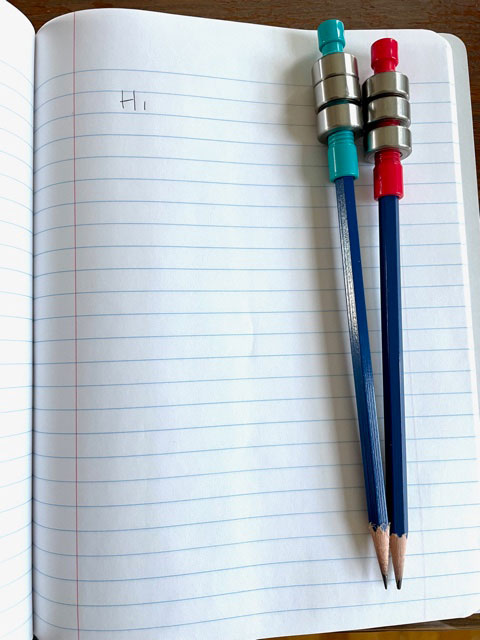
.
The product is simple, but actually very special. For years, OTs have been trying to piece together their own weighted pencils, but it was clunky and honestly kind of a pain to make. This Weighted Pencil is easy, sleek, and multifunctional.
What is the Weighted Pencil? At the end of the pencil is a removable attachment that secures 1-3 weights (your choice). I love that the heaviness of the tool is adjustable! You simply unscrew the cap, twist off the desired weights, and then screw the cap back on. It allows the teacher, therapist, or child to figure out exactly what feels best in their hand. Occupational Therapy Tip: I would start with only one weight and move to heavier based on a trial and the child’s report.
.
.
The Weighted Pencils come in 6 different fun colors to choose from: black, red, teal, lime green, yellow, and dark blue. It comes with an eraser-less pencil and just an FYI this will not fit on pencils with erasers, but I’m okay with that. Give the child with one of those thick erasers and let their hands get to (heavy) work.
.
WHO ARE THESE PENCILS FOR?
Why would you use a Weighted Pencil? They are the ideal tool to use when a child needs more sensory feedback or grasp improvements:
- Additional proprioceptive input to the fingers and hand: This helps the hand and brain connect, resulting in greater hand awareness, more focused mark making, and improved grading of hand/finger force. If the brain is better connected to the hand, the eyes may attend better, improving visual-motor skills. If you have a child that uses very heavy or light pressure when writing or doesn’t look at what their hand is doing, then this would be a great resource to try!
.
- Grasp: Some children hold the pencil so it’s sitting straight up against the lateral border of the index finger when ideally the pencil is sitting in that soft space between the thumb and index fingers (the web space). The weighted pencil’s heaviness naturally pulls the pencil back into that space to allow for a more functional grasp.
.
.
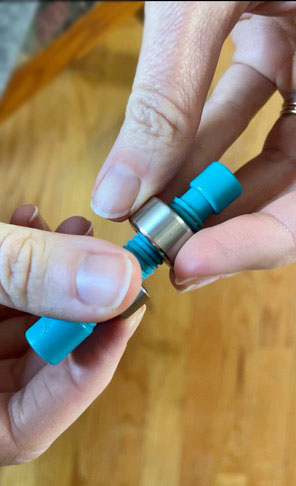
.
- This tool can also be used as a hand fidget! I LOVE that the attachment is removable and easily fits in the palm of the hand. For some children, when they manually spin the weights up and down the base, it provides just enough movement that it can improve focus and attention. As with all fidget tools, there are rules and it is not a one-size-fits-all thing. Check out this blog post I wrote for ARK to find out what the rules are and learn more about the power of fidgeting.
.
SO HOW DO YOU KNOW IF THEY ARE WORKING?
You’ll want to ask yourself a few questions when observing the child use the weighted pencil:
- Is their handwriting better? Overall, you are looking at legibility (how well can you read what they wrote), which includes how much control over the pencil they had. Are their marks still all over the place or excessively long and overlapping?
- Is there an improvement in how much force they are using? Are they still pushing so hard they are ripping through paper or breaking the lead tip? Are their marks too light they are hard to read?
- Does the child look comfortable when using it? Sometimes new tools have an adjustment period, but we want to child to ultimately enjoy using it. Another Occupational Therapy Tip: If the pencil with the weighted attachment seems too long for the child, pop off the attachment and place it on a shorter golf pencil.
.
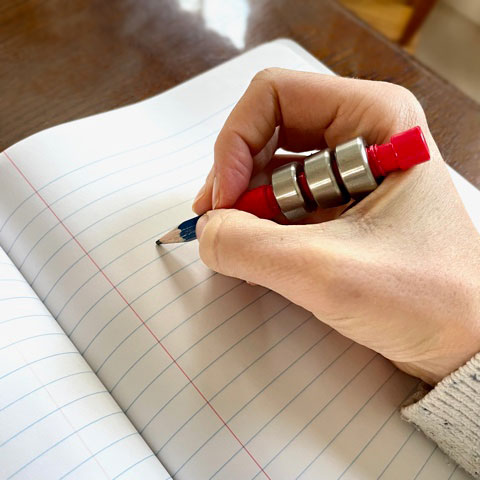
.
.
If you are unsure if it is working or if you have additional handwriting concerns, don’t think twice about contacting your local Occupational Therapist. OTs are pro’s at looking at and identifying the underlying reasons that may be impacting the child’s success with handwriting. Additionally, we can do formal handwriting assessments to see exactly where the breakdown might be.
If you are an OT, I have a free printable checklist that identifies each system that contributes to the components of handwriting. It’s ideal to use during screenings and evaluations to help you make sure you are not missing anything and provides you with additional clinical observations/assessments that target the skills.
Download it here.
.
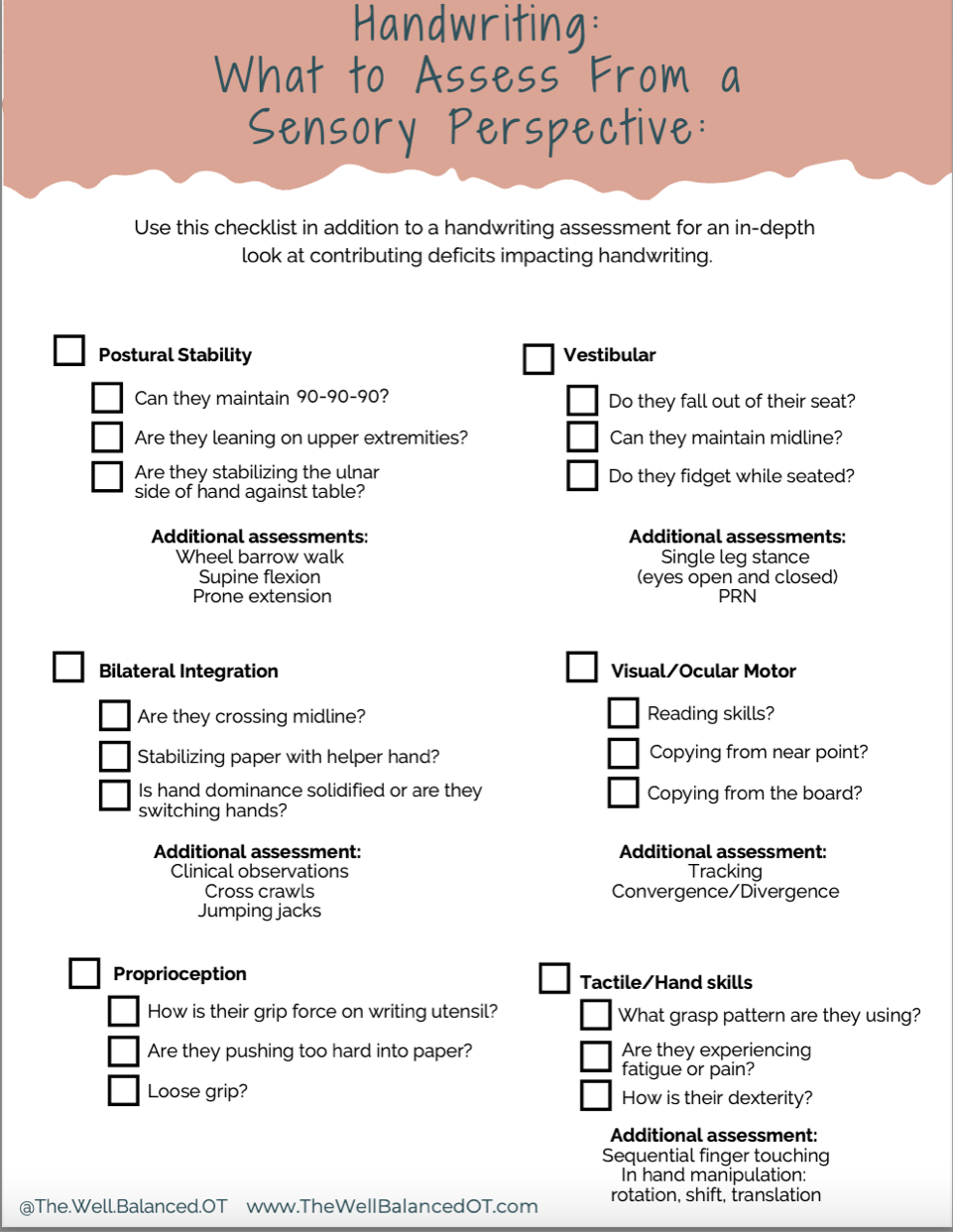
.
Katie Zelinski
Katie Zelinski graduated from New York University with a Masters in Occupational Therapy. She currently lives in Cleveland, Ohio. She has additional training in Ayres Sensory Integration, S.O.S., feeding, reflex integration, and iLs programs.
Follow Katie on Instagram @the.well.balanced.OT or visit her website at www.TheWellBalancedOT.com.
.


